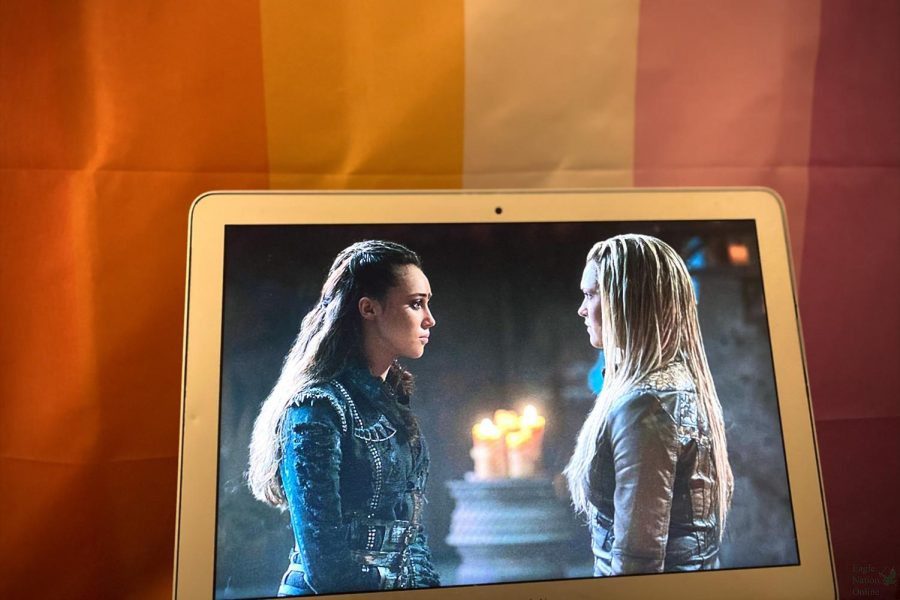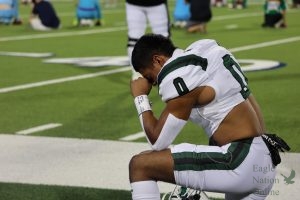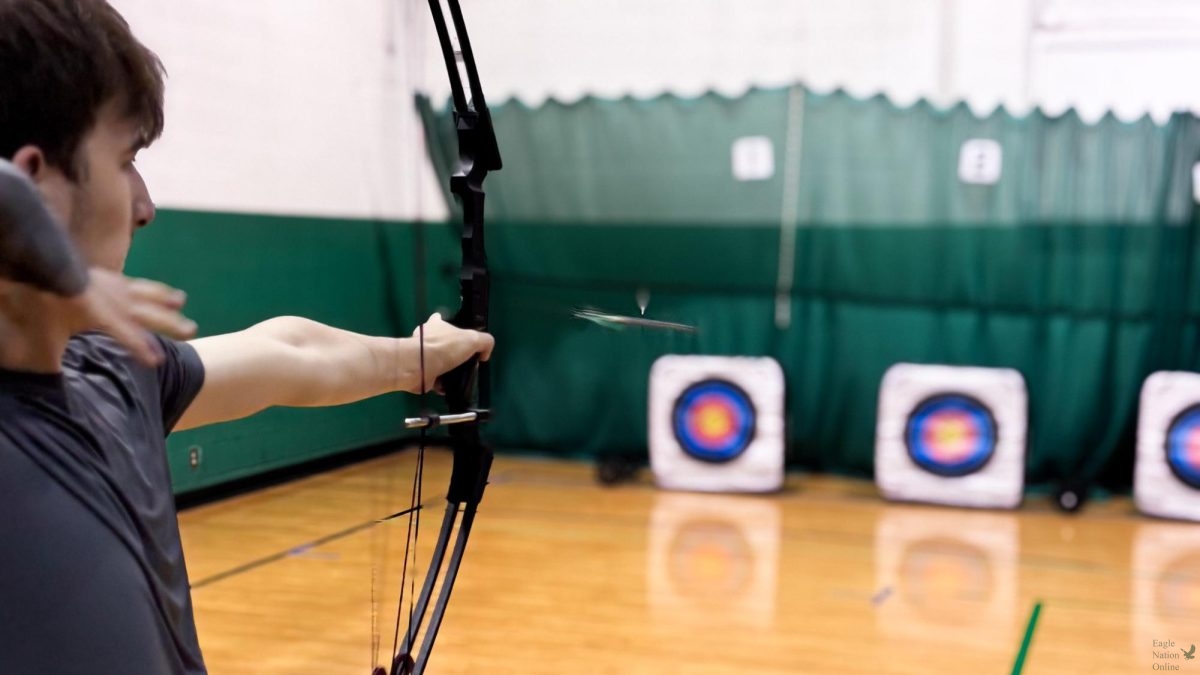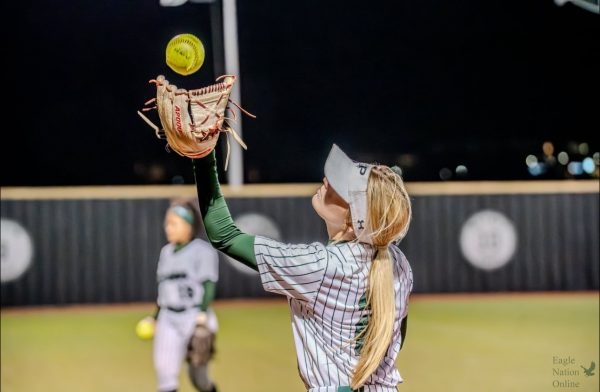Opinion: Representation of lesbianism in media creates harm
In front of a lesbian flag, the CW’s “The 100” plays on a MacBook. Lexa and Clarke had a romantic relationship in the second and third seasons of the show. Lexa died taking a bullet meant for Clarke after they made their relationship official in season 3 episode 7, a prime example of the “Bury Your Gays” trope.
April 16, 2021
While LGBTQ+ representation in film and TV has steadily inclined over the years, the number of lesbians and bisexual women has barely increased.

According to GLAAD’s 2020 LGBTQ+ representation overview, 68% of inclusive films include gay men, while only 36% feature lesbians and 14% have bisexual representation. This is a disappointing decrease from GLAAD’s last report in 2018, where the appearances of gay men and lesbians were equal at 55% percent. The 2018 GLAAD statistic is more proportionate to UCLA’s data on the percent of men and women in the U.S. that identify as lesbian, gay, and bisexual, which has gay or bisexual men at 3.6% and lesbian or bisexual women at 3.4%.
These numbers are an improvement from hardly any representation in the past, but the representation that does exist is harmful.
“Bury Your Gays,” sometimes called “Dead Lesbian Syndrome,” is a trope in film and TV where homosexual characters are seen as less valuable than heterosexual characters. The most common execution of the trope is when a lesbian, gay or bisexual character is killed – often violently – after a happy event, to advance the plot of a heterosexual character. An infographic from Autostraddle shows that 31% of lesbians and bisexual women have died on American TV shows from 1976-2016.
Some may think that this trope is purely a coincidence since death is so prominent on our screens, but the statistics say otherwise. In Vox’s chart of character deaths in the 2015-2016 TV season, when the prominence of the “Bury Your Gays” trope came to the forefront, it shows that 10% of all deaths on TV are lesbians and bisexual women. When compared to the other statistics, it is shown that lesbians and bisexual women are five times more likely to be killed on TV than any other group.
One example that brought this trope to the forefront is the death of the openly gay character Lexa on the CW’s “The 100,” who died taking a bullet meant for her girlfriend, Clarke. Right before her death, Lexa had just made her relationship with Clarke official, fulfilling the common execution of the “Bury Your Gays” trope. As a fan of “The 100” myself, I believed the show to be progressive with a lesbian relationship at the forefront, and I was outraged after Lexa’s death. Just when the lesbian and bisexual women of the LGBTQ+ community felt represented by a mainstream network, it was ripped out from under us with her tragic ending.
But what about the ones that do live? 69% of lesbians and bisexual women live on TV, so what of them? According to Autostraddle, only 16% of lesbians and bisexual women received a happy ending.
That is only 30 characters. These storylines presented time and time again ingrain the idea that Sapphic relationships and lifestyles seldom end happily into the minds of the U.S.’s 3.4% population of lesbians and bisexual women.
As someone who identifies as a lesbian myself, it’s disheartening to see that those who try to live the life I want to live end up dead on my screen. It hurts, and despite the legalization of gay marriage in 2015, it makes me feel like a happy future is impossible after watching lesbians and bisexual women die time and time again.
Lesbians and bisexual women need and deserve better representation for themselves and future generations of the LBGTQ+ community.





























